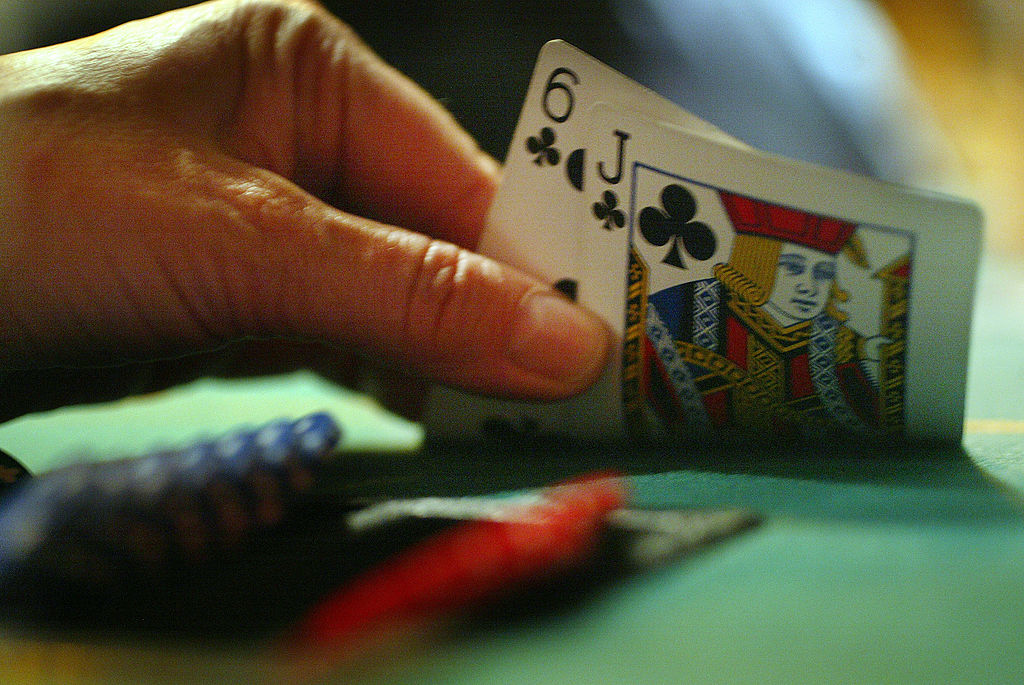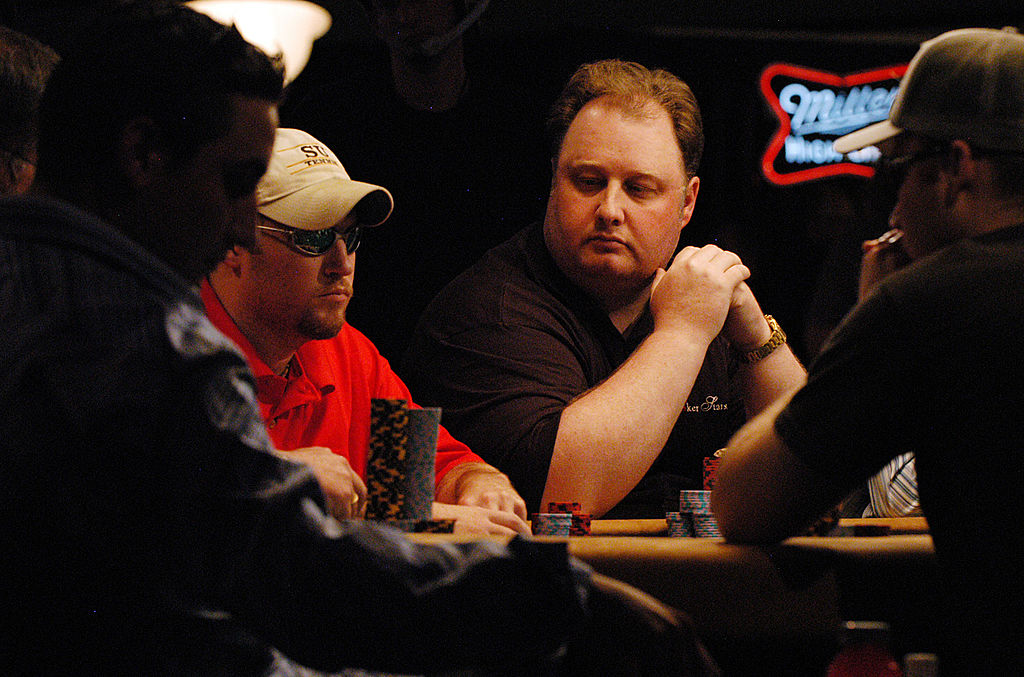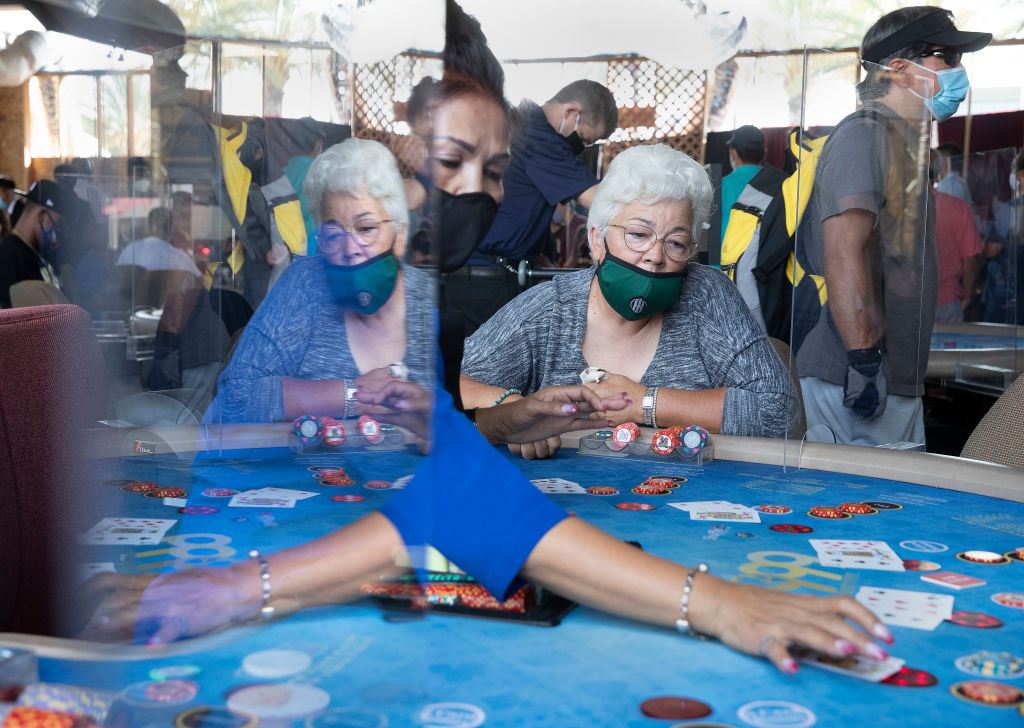Understanding the Dead Man’s Hand in Poker
| Online Poker · Understanding the Dead Man's Hand in Poker |
Luck and superstition play a significant role in poker, influencing how players approach the game. Often seen as an omen of bad luck, the dead man’s hand impacts player psychology, shaping their perceptions of risk and fortune. This hand, steeped in history and legend, frequently appears in poker culture, blending superstition with fascination.

The dead man’s hand in poker refers to a hand that consists of two black aces and two black eights. It became legendary when Wild Bill Hickok was holding this hand as he was fatally shot during a poker game in 1876, marking the moment of Hickok's death. This infamous combination has since become a symbol of both misfortune and intrigue in poker. In this article, we’ll explore the history, myths and impact of dead man’s hand on poker and popular culture.
Check out our Clubs Poker promo code!
THE ORIGINS OF THE DEAD MAN'S HAND
The term ‘dead man’s hand’ first emerged in 1876, closely linked to the legendary figure Wild Bill Hickok. On the fateful night of August 2, 1876, Hickok was playing poker at Nuttal & Mann’s Saloon in Deadwood, South Dakota Territory, when he was fatally shot while holding a hand that would forever be remembered. This tragic event cemented the association of the dead man’s hand with Hickok’s untimely death.
A corrupt mayor seeking revenge after his brother was killed played a pivotal role in the events leading up to Hickok's death.
However, the term predates Hickok’s death, with earlier references to different card combinations also being called the dead man’s hand. One such example includes a combination of three jacks and a pair of tens. Despite these variations, it is Hickok’s final hand that has become the most enduring symbol of this ominous poker hand.
Check out our glossary of poker terms.
THE COMPOSITION OF DEAD MAN'S HAND

The dead man’s hand is most commonly recognized as consisting of a pair of black aces and a pair of black eights. This specific combination of cards was said to be held by Wild Bill Hickok at the moment of his death, adding a layer of mystique to this already intriguing poker hand. The modern interpretation of the dead man’s hand as two pairs—black aces and black eights—gained traction after the 1926 publication of a book on Hickok.
Interestingly, the fifth card in Hickok’s hand remains a subject of debate among historians and poker enthusiasts. Various accounts suggest different cards, ranging from the Queen of Hearts to the five or nine of diamonds. Some even propose the Queen of clubs or the Jack of diamonds as potential candidates. This uncertainty only adds to the allure and mystery surrounding Hickok’s hand.
Over time, the dead man’s hand has evolved in its interpretation, but it remains a powerful symbol in poker culture. The combination of black aces and eights, known as aces and eights, is not only a strong hand in many poker games but also a reminder of the fateful night that solidified its place in history.
Our guides will teach you how to play poker.
WILD BILL HICKOK AND THE LEGEND OF DEAD MAN'S HAND
James Butler Hickok, better known as Wild Bill, was born on May 27, 1837, in Homer, Illinois. He became a notable figure of the American Old West, known for his roles as a soldier, scout, lawman and gambler. Hickok’s reputation was often embellished by his own tales and those of contemporary writers, contributing to his legendary status.
Hickok’s life came to a violent end on August 2, 1876, when he was shot in the back of the head while playing poker at Nuttal & Mann’s Saloon in Deadwood. Despite his skills as a gunfighter, historical accounts suggest that Hickok may have killed only six or seven men in gunfights during his career. This tragic event not only marked hickok’s death but also gave birth to the legend of the dead man’s hand.
The association of this particular poker hand with Hickok’s death has immortalized it in poker lore. His life, filled with daring exploits and dramatic confrontations, and his untimely death, have made Wild Bill Hickok an enduring symbol of the Wild West.
Check out the ClubGG poker review when you're ready to apply this historical knowledge to your game!
THE FATEFUL POKER GAME AT MANN'S SALOON
On that fateful night of August 2, 1876, Wild Bill Hickok was seated at a poker table in Nuttal & Mann’s Saloon, facing away from the door—a position that made him vulnerable. Despite his usual caution, Hickok’s premonition of death in Deadwood came true in a most dramatic fashion. The events of that night would forever change the course of poker history.
Before the tragic events unfolded, Hickok aspired for a quiet life with his new bride, seeking tranquility amidst the chaos of his adventurous existence.
Jack McCall, who had lost a significant amount of money to Hickok the previous day, approached Hickok from behind and shot him in the back of the head. McCall later claimed that he killed Hickok to avenge the death of his brother. As he pulled the trigger, Jack McCall reportedly exclaimed, “Damn you! Take that!”. This sudden act of violence shocked everyone present and led to the trial and execution of Jack McCall.
The immediate aftermath of the shooting saw Hickok’s lifeless body slumped over the poker table, holding the infamous hand of two black aces and two black eights. This scene has been etched into the collective memory of poker players and enthusiasts, symbolizing both the fragility of life and the unpredictability of the game.
THE LEGACY'S OF HICKOK'S HAND
Wild Bill Hickok remains a legendary figure in the American Old West, renowned for his skills as a gunslinger and poker player. The dead man’s hand, consisting of two black aces and two black eights, is forever linked to Hickok’s final moments, solidifying its place in poker history.
Hickok’s dramatic shooting at Mann’s Saloon on August 2, 1876, has been referenced in numerous cultural works, underscoring its significance in American folklore. Poker players often recount personal experiences or superstitions related to drawing the dead man’s hand, viewing it with a mix of respect and dread.
The dead man’s hand has transcended its origins to become a significant element of poker culture. It symbolizes a combination of strength and misfortune, serving as a reminder of Wild Bill Hickok’s dramatic end. The phrase ‘dead man’s hand’ has become entrenched in poker vernacular, often evoking a sense of caution and respect among players.
Dead man's hand is more than just a poker hand; it represents the blend of skill, luck, and fate that defines the game. It serves as a poignant reminder of the risks and rewards inherent in poker, making it a timeless symbol in the world of gambling.
VARIATIONS IN POKER GAMES
Poker is a poker game of many variations, each with its unique rules and strategies. Draw poker, for example, involves players receiving a complete hand, which they can later improve by replacing cards. Texas hold ‘em, one of the most popular poker games today, sees players combining their hidden cards with shared community cards to form the best possible hand. Mixed games like HORSE combine several poker variants, including Texas hold ‘em and Omaha, into one format, providing a diverse and challenging experience for players.
Despite these variations, the rankings of poker hands remain consistent across different poker games. Whether playing Texas Hold’em, Omaha, or five card draw, the hierarchy of hands is the same, ensuring a standard understanding of what constitutes a strong hand. High-low split games allow both the highest and lowest hands to win, introducing additional complexity.
Understanding these variations and how they influence the game is crucial for any serious poker player. From the traditional five card draw to the strategic depth of Texas hold ‘em, each game offers unique opportunities and challenges, making poker a continually evolving and exciting pursuit.
THE IMPACT ON MODERN POKER PLAYERS
The history and legend of the dead man’s hand have a profound impact on modern poker players. Knowing the ominous background of this hand, players may change their betting strategies when they acquire it, often treating it with a mix of caution and respect. Despite its historical association with misfortune, the dead man’s hand can still be a strong combination in the right circumstances during gameplay.
Superstition is a significant aspect of the poker world, with players often engaging in rituals or carrying lucky items to mitigate the game’s inherent uncertainty. Some players believe that certain hands, like Kings and Aces, can bring good luck, even though these beliefs are not based in logic. The phrase ‘good luck’ is often avoided in poker settings as it is considered to potentially bring bad fortune to players.
Other common superstitions include avoiding $50 bills, stacking chips in specific configurations, and wearing lucky items. These practices, while not scientifically proven to affect the outcome of the game, provide players with a sense of control and comfort in a game where chance plays a significant role.
NOTABLE MENTIONS IN POPULAR CULTURE
In literature and films, the dead man’s hand is often used to convey themes of doom and misfortune, reinforcing its ominous reputation. These portrayals contribute to the mystique of the hand, making it a powerful symbol in the poker world and beyond.
The dead man’s hand has left an indelible mark on popular culture, appearing in numerous films, television series, books, and songs. Wild Bill Hickok’s character has been depicted in movies by actors like Jeff Bridges and Sam Elliott, bringing his legendary status to life on the big screen. Television series such as ‘The Adventures of Wild Bill Hickok’ and HBO’s ‘Deadwood’ have also contributed to his enduring legacy.
Literature has not been left behind, with several books exploring Hickok’s life and the myth surrounding his persona. In ‘Along Came A Spider,’ the dead man’s hand is used to win a card game, while in ‘One Flew Over the Cuckoo’s Nest,’ the main character sports a tattoo of the hand on their shoulder. Songs like ‘Dead Man’s Hand’ by Ha Ha Tonka and ‘Ace Of Spades’ by Motörhead further illustrate the hand’s influence in music.
Hickok’s legacy as a cultural symbol of the Wild West represents themes of heroism and the romanticized notion of outlaws. His story and the dead man’s hand continue to fascinate and inspire, serving as a testament to the enduring allure of the Old West.
COMPARING POKER HANDS
The dead man’s hand, traditionally composed of two black aces and two black eights, is a two pair hand. In the hierarchy of poker hands, it is bested by combinations such as a full house, four of a kind, and a straight flush. Other notable hands, like a full house or three jacks, can also overshadow the dead man’s hand in terms of strength.
Though it carries an unlucky connotation, the dead man’s hand remains an iconic symbol in poker, representing the game’s unpredictability and rich history. The legacy of dead man's hand continues to influence the world of poker, whether dealt as a winning or losing hand.
FINAL THOUGHTS ON DEAD MAN'S HAND
The dead man’s hand, with its intriguing history and cultural significance, continues to captivate poker players and enthusiasts. From its origins tied to Wild Bill Hickok’s death to its portrayal in popular culture, this hand symbolizes the blend of skill, luck, and fate inherent in poker. Understanding the composition, variations, and superstitions surrounding the dead man’s hand provides a deeper appreciation for the game and its rich heritage.
As you sit at the poker table, remember the legacy of Hickok and dead man's hand as well as the lessons it imparts about the unpredictable nature of life and poker. Embrace the game’s mysteries, and may your hands be as fortunate as they are legendary.
KEY TAKEAWAYS
- The dead man’s hand, linked to Wild Bill Hickok, typically consists of two black aces and two black eights, symbolizing both strength and misfortune in poker culture.
- Hickok’s dramatic death while holding this hand in 1876 has immortalized it in poker lore, influencing player strategies and superstitions. Thus, the two pair combination of black aces and eights, with a mystery fifth card remains a poker legend from Texas Hold'em to seven card stud.
- The dead man’s hand has permeated popular culture, appearing in films, literature, and music, solidifying its status as an enduring symbol of the American Old West.
DEAD MAN'S HAND FAQ
WHAT IS THE DEAD MAN'S HAND IN POKER?
The dead man's hand in poker comprises two black aces and two black eights. This hand is historically linked to Wild Bill Hickok, who allegedly held it at the time of his fatal shooting.
WHY IS IT CALLED THE DEAD MAN'S HAND?
The term 'dead man's hand' refers to a specific poker hand associated with Wild Bill Hickok, who was shot and killed in 1876 while holding it. This has led to its interpretation as a symbol of bad luck in poker.
WHAT WAS THE FIFTH CARD IN HICKOK'S HAND?
The fifth card in Hickok's hand is uncertain, with various theories suggesting it could be the Queen of Hearts, the five or nine of diamonds, the Queen of Clubs, or the Jack of diamonds. Thus, the true identity of the card remains elusive. However, the legend of dead man's hand lives on.
HOW DOES THE DEAD MAN'S HAND RANK IN POKER?
The dead man's hand ranks as a mid-tier hand in poker, comprising two pairs. It is surpassed by higher-ranking hands such as a full house, four of a kind, and straight flush.
HOW HAS THE DEAD MAN'S HAND INFLUENCED POKER CULTURE?
The dead man's hand has significantly influenced poker culture by symbolizing a blend of strength and misfortune, while its frequent references in popular culture have solidified its legendary status.









